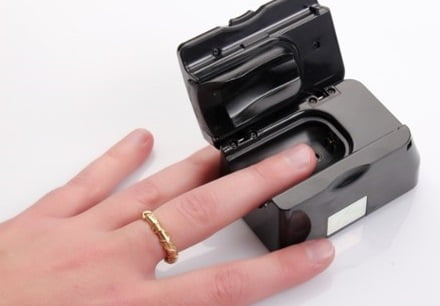Revolutionizing Diabetes Care: The Rise of Non-Invasive Glucose Monitoring
Managing diabetes has long relied on painful and repetitive finger-prick tests, but a new wave of innovation is changing that. Non-invasive glucose monitoring offers a needle-free alternative that improves comfort, encourages more frequent monitoring, and ultimately enhances quality of life for millions of people with diabetes. Let's explore the technology, benefits, and future potential of this exciting advancement in diabetes care.
Managing diabetes has long relied on painful and repetitive finger-prick tests, but a new wave of innovation is changing that. Non-invasive glucose monitoring offers a needle-free alternative that improves comfort, encourages more frequent monitoring, and ultimately enhances quality of life for millions of people with diabetes. Let's explore the technology, benefits, and future potential of this exciting advancement in diabetes care.

What is Non-Invasive Glucose Monitoring?
Non-invasive glucose monitoring refers to tracking blood sugar levels without breaking the skin. Instead of needles or sensors inserted under the skin, these technologies use methods like optical sensors, electromagnetic waves, or biosensors placed on the skin to gather real-time glucose data. This approach dramatically reduces pain and inconvenience, while encouraging more consistent monitoring.
Key Benefits for Diabetes Management
• Pain-Free Monitoring: No finger pricks mean a more comfortable experience, which can significantly improve compliance.
• Real-Time Glucose Data: Continuous updates allow for smarter decisions regarding insulin, diet, and exercise.
• Lower Risk of Infection or Irritation: Avoiding skin punctures means fewer skin-related complications, especially for sensitive users.
These benefits translate into improved glycemic control, fewer complications, and a greater sense of autonomy for people managing diabetes.
Leading Non-Invasive Glucose Monitoring Devices
• GlucoWise: Uses radio-frequency technology; still in development.
• SugarBeat: A patch-style wearable available in parts of Europe.
• Cnoga CoG: Measures glucose via skin color changes using optical sensors.
• GlucoModicum: Uses magnetohydrodynamic technology; in testing phase.
• Apple & Samsung: Both are developing smartwatch-based monitoring systems using optical and sensor-based technologies.
Challenges to Widespread Adoption
Despite its promise, non-invasive glucose monitoring still faces obstacles:
• Accuracy concerns: Must match the precision of traditional meters.
• Regulatory approval: Devices require clinical trials and safety validation.
• Cost and access: Availability remains limited in many regions.
Looking Ahead
As tech giants invest in wearable health solutions and healthcare startups push boundaries, the future of diabetes care looks more connected, personalized, and pain-free. Non-invasive glucose monitoring has the potential to become a standard part of daily life, offering a seamless and less stressful way to stay healthy.